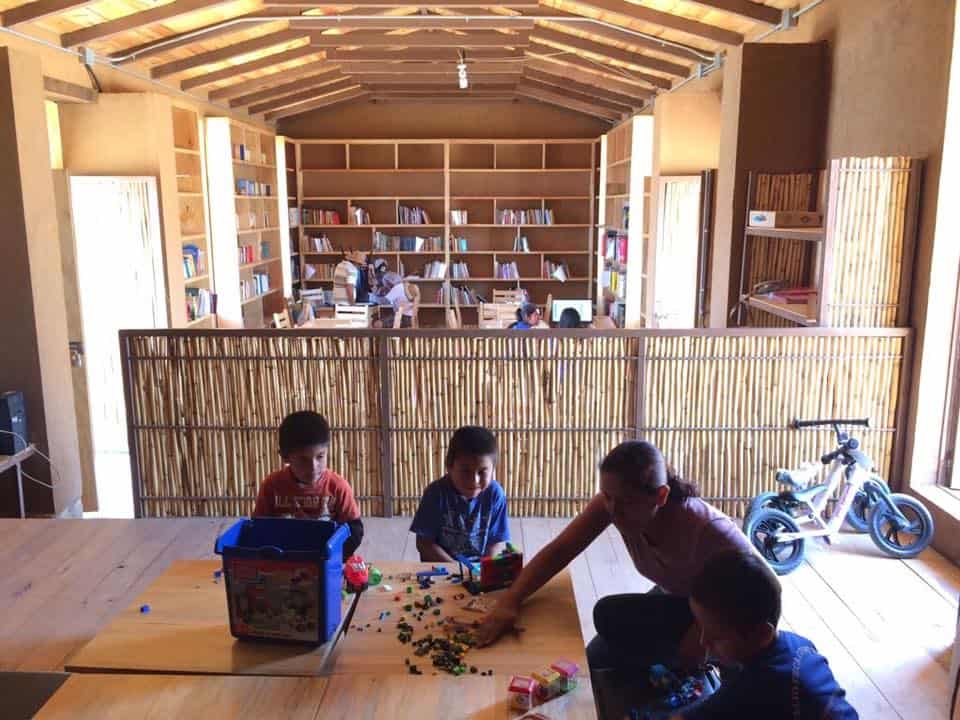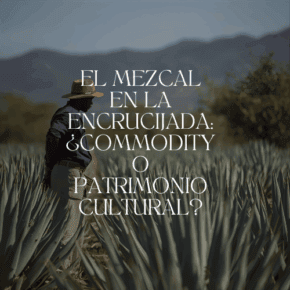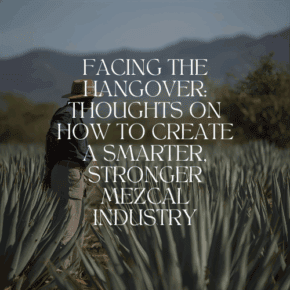
This is not a rhetorical question and in fact it remained at the forefront of my mind as I spoke with brands, mezcaleros, development people, and academics while I was in Oaxaca, and prompted so many more questions. Why is there such an intense focus on sustainability within the mezcal industry? Just what is it about mezcal that inspires such a hardcore call for sustainability?
We are after all talking about a spirit that, for the most part, is produced in remote and rudimentary places, by people who have been economically marginalized for centuries. By demanding sustainable practices are we making it more difficult for makers to succeed in trying to invoke a first world attitude and privilege around what we think should be a pure and nobel craft process?
It certainly isn’t the only farm to bar beverage out there – rum, wine, beer, whiskey – all are just as reliant on their agricultural ingredients and have the same mystical and storied past to warrant strong arguments for better and more sustainable practices. And yet, we do not demand those standards when selecting what to drink and bars or restaurants.
I feel strongly about the subject, but I am driven by my own background in sustainable food issues. In truth, I would like to see sustainable practices across all food and beverage categories as I don’t understand why people wouldn’t want that from anything they put in their bodies. I happen to be focusing on mezcal because, well, it is my job and passion project. But I think the mezcal industry has brought this on itself. It has spent an incredible amount of energy defining itself as handcrafted and a quasi-spiritual product by the people who produce it. There is a story with mezcal and this story is what has allowed it to become the largest growing alcohol category – based on percentage growth – in the country. It’s why people buy the product. So in a sense, the industry must now really put its money where its mouth is.
In reality, there is a sustainability gap that is becoming ever more real as demand increases. I have written about the subject of sustainability previously, and what the term means. Based on how sustainability is defined, there is not a single mezcal brand in the market that is fully sustainable, primarily because the industry as a whole is not currently sustainable. Some brands are more successfully implementing sustainability programs, but they are still at the beginning stages and have a long way to go. The greatest success has been on the agave front – with better growing techniques and a concerted focus on long term planning and availability. This is not only with espadin, but also with wild agave. There are projects that are looking at the most efficient ways to grow agave (from seed, hijuelo or flor) and maintain diversity; the most visible ones are led by Graciela Angeles of Real Minero and Luis Mendez of Sola de Vega. Soil health is also a subject of deep focus and therefore many planting projects are following the traditional milpa method of interspersing agave with corn and beans which maintains a better acidic and nutrient rich balance in the earth. Monoculture practices deplete the soil of nutrients, creating a heavy reliance on herbicides and fertilizers, which can over time, deplete the productivity of the farm land.
There are projects that are looking at the issue of wood and its use in the process and how to curtail deforestation. There are also projects looking at the by products from the process – the bagasso and viñasa problems – not issues in small production, but problematic with operations that produce at higher volumes. This is especially true for the viñasa, the contaminated water left from the process that can’t be dumped back into the ground or rivers, as has been done in Jalisco with great environmental impact. There is increased awareness when it comes to fair pricing and what the market looks like, and an increasing role for producer run cooperatives to curtail exploitation. These are all exciting and laudable advancements, but there is one area that remains woefully underdeveloped, and that is support and give back to communities where mezcal is made and that’s because it is hugely complicated.
Without doubt, Oaxaca is one of the most complicated states in Mexico. Not only does it have a complicated political history, but its indigenous culture and history has created a unique society in which there is no cookie cutter approach when it comes to development issues. To better understand this, I highly recommend a book called Zapotec Women by Lynn Stephen which looks at the unique structure of the indigenous communities across Oaxaca. It is also important to understand the legacy and impact of colonialism and how the mezcal industry can be seen as yet another conquest by foreign entities that are draining the state of natural resources. If the mezcal category does not understand the cultural environment it is operating in, then there will be little success when it comes to community development.
During my trip I met with different groups and organizations working on a wide variety of issues impacting communities. These ranged from product/agricultural groups, to developmental/ngos/academics and craft/artisan cooperative projects. What I heard from each of them is that there has yet to be active engagement by the mezcal industry with organizations that have years of experiencing in developing community focused programs. Because there has been such a focus on mezcal, and huge growth in tourism spurred by mezcal, there is a feeling that the money being generated by the industry is not coming back to the communities. But what would that even look like?
How does a mezcal brand figure out what is needed in a community in which it operates? Does it give money directly to the municipal government to fund a project given the history of corruption and money making its way into pockets rather than projects? Does it work with a specific family which could create an imbalance in the community and lead to the common envy problem? Does it work with an existing NGO that may have the best of intentions but has the classic pattern of giving communities what it thinks they need versus what is needed?
Answers aren’t easy, and the community development landscape around the world is rife with examples of projects with the best intentions that in no way serve the communities they were intended to serve. So, what is the way forward, and are there any current examples of community projects?
Del Maguey has an interesting “case study” in what started as a self-serving need. In Teotitlan del Valle, the center of operations for Del Maguey, there was a lack of phone service because Telmex was not interested in putting in a cell tower. This was creating issues for an expanding Del Maguey, as well as hindering other businesses and schools as the town grew. Del Maguey made the decision to install a cell tower themselves, which eventually led to Telmex becoming more involved and opening more services because they (Telmex) perceived a threat/competition from the new tower. In the end, more phone service was available in Teotitlan and greater connectivity was had – benefitting both Del Maguey with its expansion and the community.
On the other end of the spectrum, and in a true grassroots project, in Santa Catarina Minas, Graciela Angeles of Real Minero and a few other women from the pueblo convinced their municipal government to make available a piece of land for a new library. Lack of libraries in rural communities is a problem, and few are able to fund the building of a dedicated space. In Minas, the piece of land the women had identified as the best place for the library, is located on the side of town that is more economically challenged than other areas. They then proceeded to raise money from private funds to pay for the building and infrastructure, and just three weeks ago opened the library after almost two years from when they initiated the project. Not only will it have books, but also computers with internet access and the ability to have online classes and programs.
I’d love to hear about other examples, and what has worked, and just as importantly, not worked. I don’t want to see people jumping head first into projects, but at the same time I don’t want to see the buck passed.
Also look, I am just saying we are asking a lot of brands, and the industry, things we are not asking for across the board in the beverage industry. Not only are we expecting the mezcal industry to reckon with and solve the sustainability issues in production, it must also step in and provide assistance in areas where government and other organizations have failed. And we expect them to do all that and still sell a bottle of mezcal for less than $35. If you work in a bar, do you ask how your shakers or stirrers or napkins are made, or what happens with all those plastic straws you use go and base your buying decisions on that? Think about that.












Leave a Comment